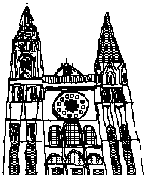-
Study Guide
for The General PaperMaking Up
and Expressing
Your Own Mind Proceed directly to the list of questions for the Forbes articles.Learning the art of writing papers which demonstrate sound reasoning, maturity of thought, persuasive argument and effective use of language is a journey requiring two activities, each of which is the mirror image of the other:

- Deconstruction
- You learn to "take apart" someone else's writing.
- You ask, "How did she do that?"
- You explore technique and structure.
- You employ the skill of ANALYSIS to see how all the pieces work together.
- You look for special effects, powerful devices and persuasive elements.
- You inquire, "How did he orchestrate that reaction?"
- You evaluate the coherence of the argument.
- You seek strengths and weaknesses in the logic of the case being presented.
- You judge the adequacy of the supporting evidence.
- You ask if anything important is missing, unaddressed or ignored.
- You sort and sift through all of the above in search of "gems" - valuable elements and strategies worth acquiring to employ when constructing one's own arguments.
- Construction
- You explore what you know about the issue, topic or question.
- You draw a map, a diagram or a picture of what you know.
- You probe relationships.
- You identify and organize subsidiary questions.
- You employ the skill of Synthesis to combine the important pieces coherently and logically.
- You Make Up Your Mind.
- You apply the most effective strategies learned during Deconstruction to express your findings and viewpoints persuasively.
- Technique: special effects, powerful devices and persuasive elements - the orchestration of response
- Structure: the coherence of the argument and the logic of the case being presented
- Content: the adequacy and the impact of the supporting evidence, examples and illustrations
- You build your case.
- You deconstruct your own work, evaluate it, improve it and complete it.
- You present your case with appropriate suporting multimedia.
Questions for the Forbes Articles - Most of the authors in this collection are considered "breakthrough thinkers." Pick out three essays and read them to see what the label "breakthrough thinker" may mean and then compare and contrast your three authors with regard to the extent that each deserves the label. Go to essays.
- The writing style of many of these authors would be considered "bold," even "brash" by some more traditional writers and thinkers. Read 3-4 essays with an eye toward finding the one with the boldest style and then identify and explain the half dozen most important special effects, powerful devices and persuasive elements employed by that writer. End by judging whether or not the author has gone too far - far enough to deserve the label "bombastic" or "brash."Go to essays.
- Because these essays are predictions of future developments, we cannot be sure which will "come true," but we can ask if they have built a case coherently and logically, supplying adequate evidence to support their conjectures. Pick out two essays in order to compare and contrast them with regard to those elements. Which author does the better job of building a logical case? Why do you think this is true and how did she or he achieve this logical strength?Go to essays.
- After scanning 4-5 articles,k pick out the article which you think has the most important weaknesses. First write a somewhat tough critical review as if writing for a journal (300 words). Then write a warm and supportive message suggesting improvements (300 words) as if the writer were your student.Go to essays.
- to be continued Go to essays.
- to be continued Go to essays.
Note: This page was designed for the Ministry of Education in Singapore to support student growth in effective essay writing while making profitable use of materials on the Internet. Copyright, 1997, Jamie McKenzie
All Rights Reserved.
The materials may be used by schools and non-profit educational organizations in connection with actual teaching of students, but all other uses require explicit permission of the author.
times.
Return to From Now On Index
- Deconstruction